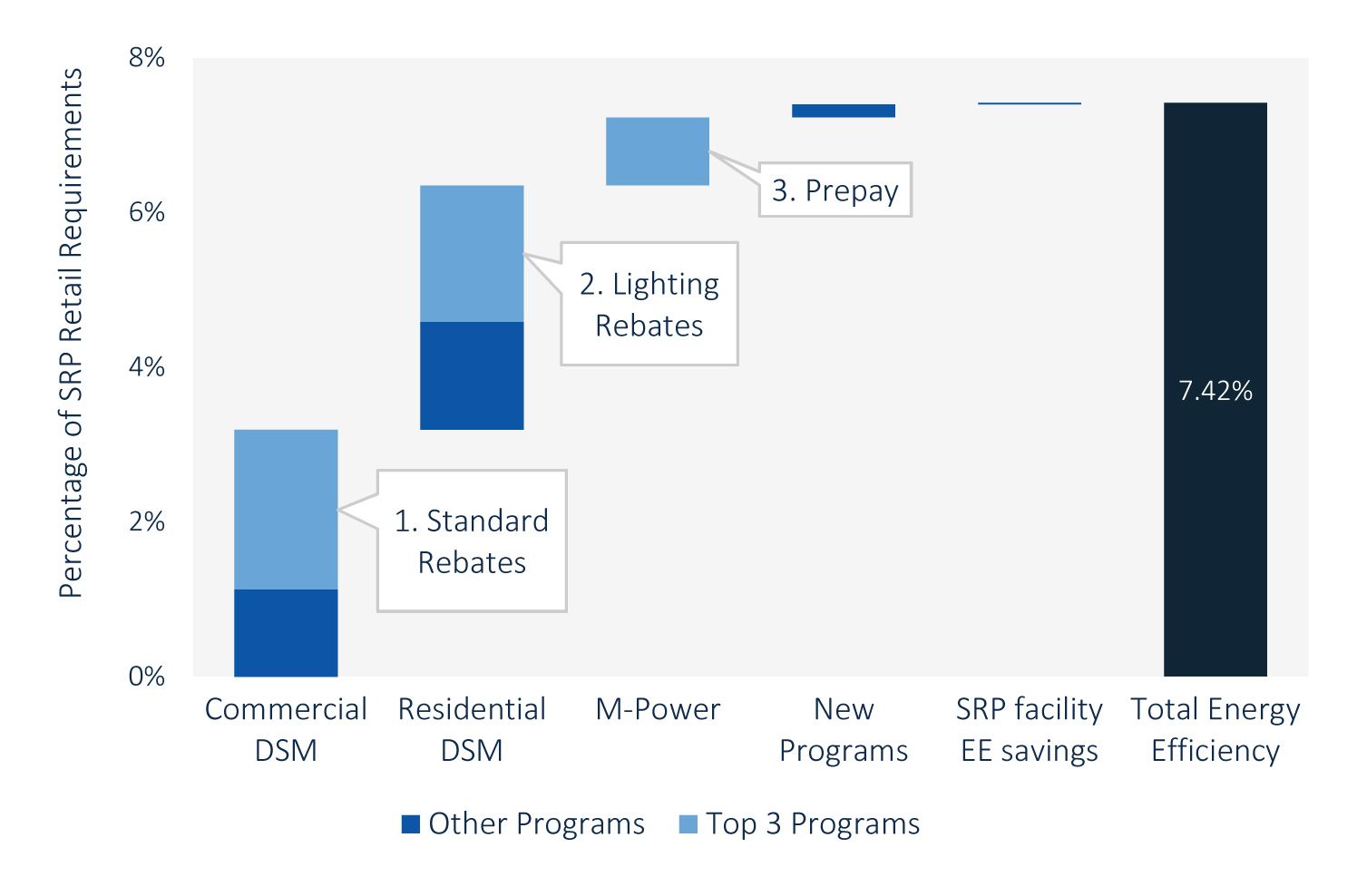Salt River Project is well on its way to meeting its 2020 goal of 20 percent of retail electricity coming from sustainable resources. The bulk of those resources is not solar or wind, but rather energy efficiency, with solar and hydro rounding out the portfolio.
The Arizona utility’s revamped energy-efficiency program garnered 2.1 percent in annual savings in fiscal year 2015, exceeding its target of 1.75 percent. The project also came in under budget. For 2016, SRP expects to hit about 16 percent for its sustainable resources portfolio, with just over 8 percent coming from efficiency.
While states like California and New York are pushing the envelope by considering performance-based energy efficiency, SRP is showing how modernizing existing programs can still offer significant benefits, especially when paired with novel rate designs.
As part of its effort, SRP picked up EnergySavvy’s platform last year to drive energy-efficiency participation and to automate and improve its Energy Star program. It also launched an energy-efficiency pilot for multifamily buildings and continued to hand out old-school rebates for items like light bulbs and appliances.
Updating its Energy Star program has been a success so far. SRP received the Energy Star “Partner of the Year” award in 2015 and had 3,450 residential customers participate. In 2016, it expects to grow that number to 4,000 while driving down the cost of delivering the program. SRP also has an Energy Star Homes program to certify energy-efficient new homes.
The move into the multifamily space will also be expanded this year, with participation ballooning from just seven buildings in 2015 to 3,000 in 2016.
A significant proportion of the savings, however, do not come from the more comprehensive audits done as part of the Energy Star program audits. Instead, the biggest piece of the savings stems from rebates for lighting and appliances.
Figure: SRP Efficiency Breakdown for Fiscal Year 2015

Source: GTM Research
Eventually, however, SRP will need other measures. SRP estimates savings from lighting rebates will peak in 2019. By 2021, SRP estimates that the Energy Star program annual savings will eclipse those of the retail lighting program.
SRP is also getting significant savings from another offering -- its prepay program. SRP has had successful prepay and time-of-use programs for years. As other utilities mull and pilot, and then mull and pilot the options again for innovative rates, SRP continues to offer an impressive amount of options for residential customers. More than 150,000 customers are on M-Power, its prepay program.
By 2021, M-Power is forecasted to be the second-largest source of annual energy savings in the residential sector. Most customers are on it to gain control of their electricity, but it has the added benefit of more than 250,000 megawatt-hours in energy savings for fiscal year 2015. The average customer saves 12 percent.
SRP also has various other dynamic pricing plans, including a time-of-use plan that varies by season with more than 160,000 customers enrolled. Nearly another 100,000 are on its peak-pricing plan, EZ-3. SRP is looking at technology options, such as smart thermostats, that could bring even greater efficiency savings from those programs too.
SRP is working with EnergyHub on a Wi-Fi smart thermostat program to understand how much additional savings customers might get when the thermostats are paired with the EZ-3 program.
The utility is also piloting a time-of-use rate with a demand charge, and has a new prepay option with time-of-use and a mandatory time-of-use plan for solar customers. While the rates for solar have been hotly contested at SRP, the popularity of many other plans show that time-of-use plans are welcomed by many customers.
SRP expects it can get a total of 250 megawatts of load reduction from residential and commercial peak reduction plans. For other utilities that are considering the cost-benefit of having various residential rate plans, SRP’s growing roster of options shows that the advantages are real, and not just for the utility.
For more on how utilities and vendors are launching innovative products that are changing how electricity is generated and consumed, check out GTM Research’s Grid Edge 100.



